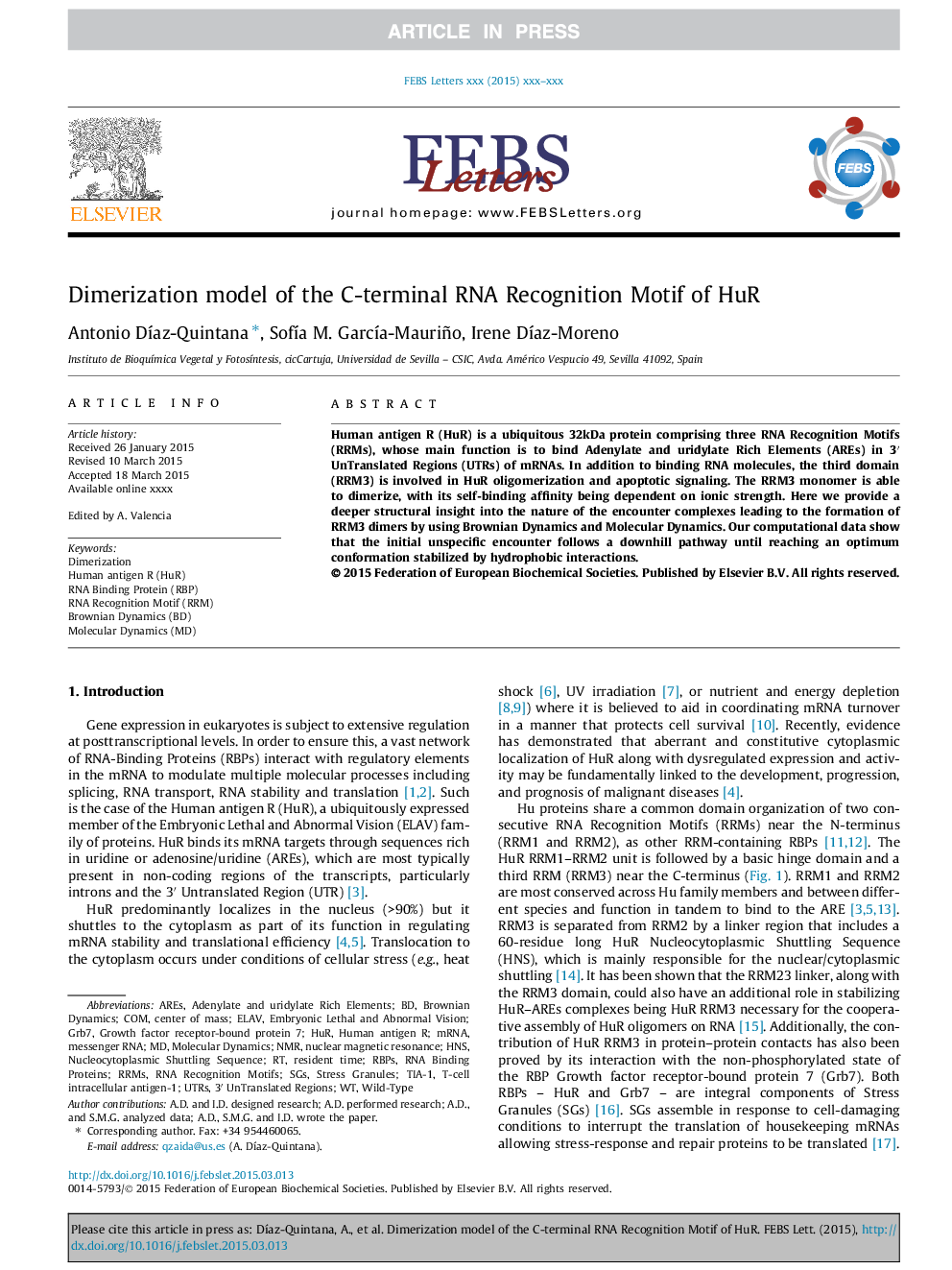| Article ID | Journal | Published Year | Pages | File Type |
|---|---|---|---|---|
| 10869972 | FEBS Letters | 2015 | 8 Pages |
Abstract
Human antigen R (HuR) is a ubiquitous 32kDa protein comprising three RNA Recognition Motifs (RRMs), whose main function is to bind Adenylate and uridylate Rich Elements (AREs) in 3â² UnTranslated Regions (UTRs) of mRNAs. In addition to binding RNA molecules, the third domain (RRM3) is involved in HuR oligomerization and apoptotic signaling. The RRM3 monomer is able to dimerize, with its self-binding affinity being dependent on ionic strength. Here we provide a deeper structural insight into the nature of the encounter complexes leading to the formation of RRM3 dimers by using Brownian Dynamics and Molecular Dynamics. Our computational data show that the initial unspecific encounter follows a downhill pathway until reaching an optimum conformation stabilized by hydrophobic interactions.
Keywords
ELAVT-cell intracellular antigen-1growth factor receptor-bound protein 7GRB7RNA recognition motif (RRM)human antigen RHNSUTRsRNA recognition motifsRRMsTIA-1COMmRNASGSAREsnuclear magnetic resonance3′ untranslated regionsRBPsmessenger RNADimerizationNMRBrownian DynamicsMolecular dynamicsMolecular dynamics (MD)center of masswild-typeRNA binding proteinsHuRStress granules
Related Topics
Life Sciences
Agricultural and Biological Sciences
Plant Science
Authors
Antonio DÃaz-Quintana, SofÃa M. GarcÃa-Mauriño, Irene DÃaz-Moreno,
